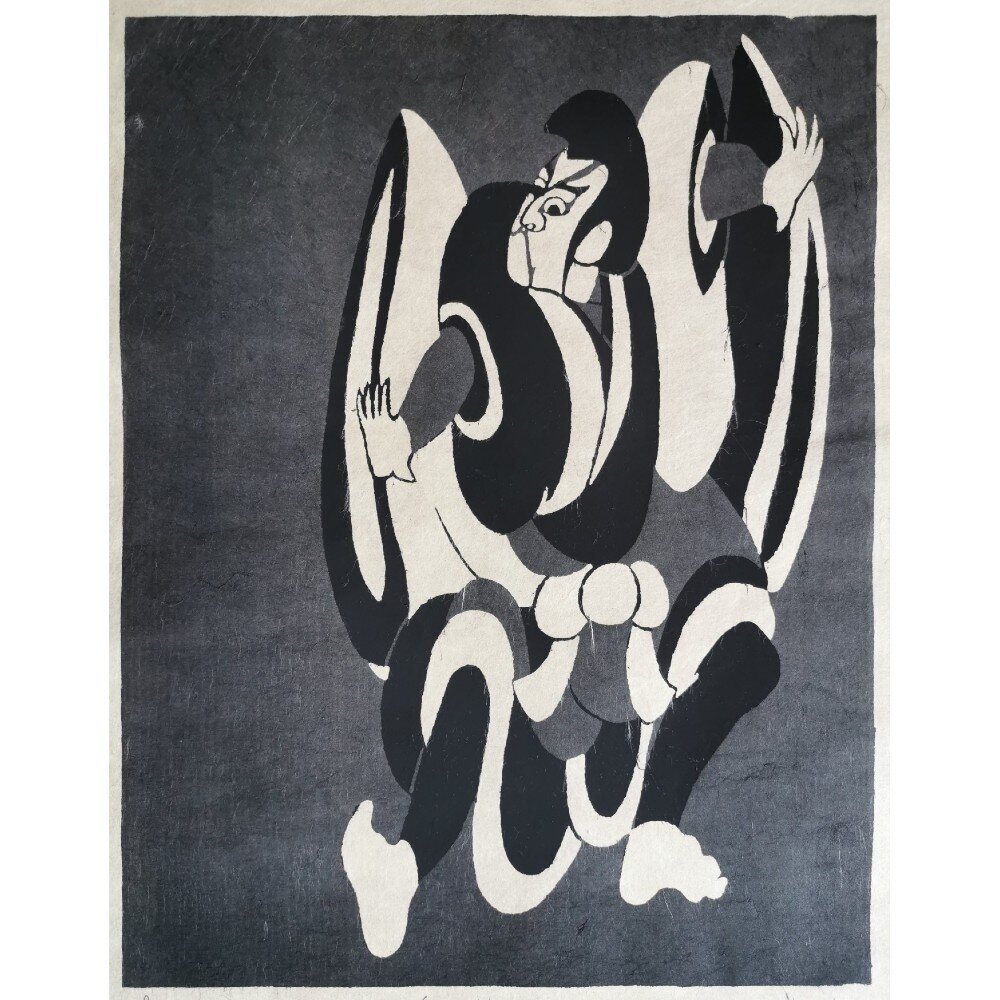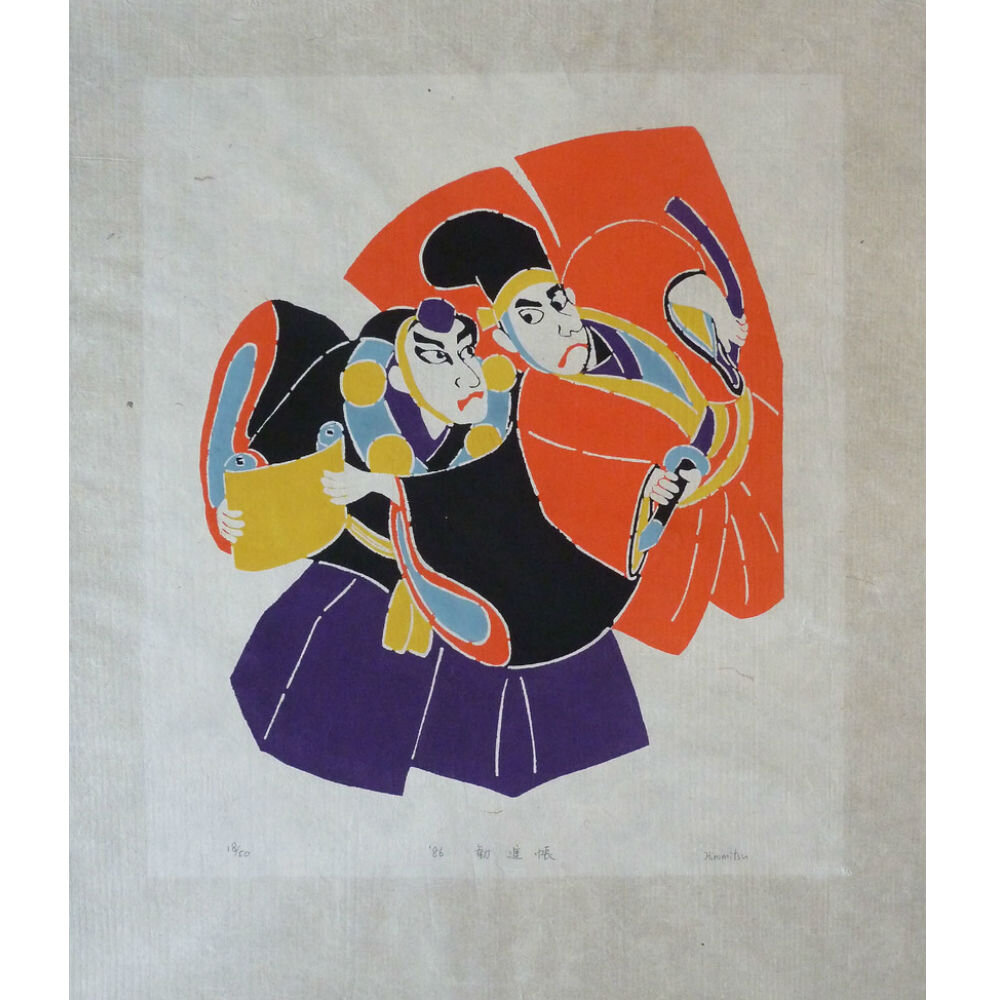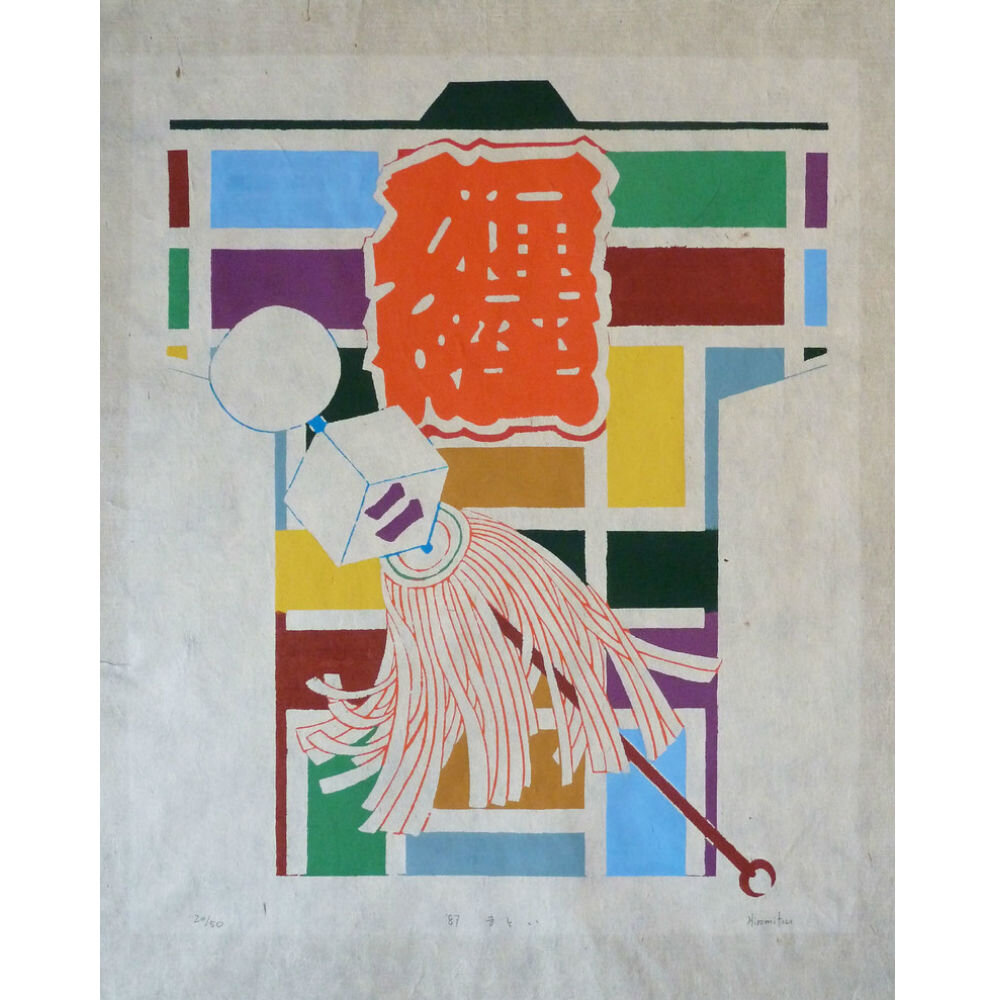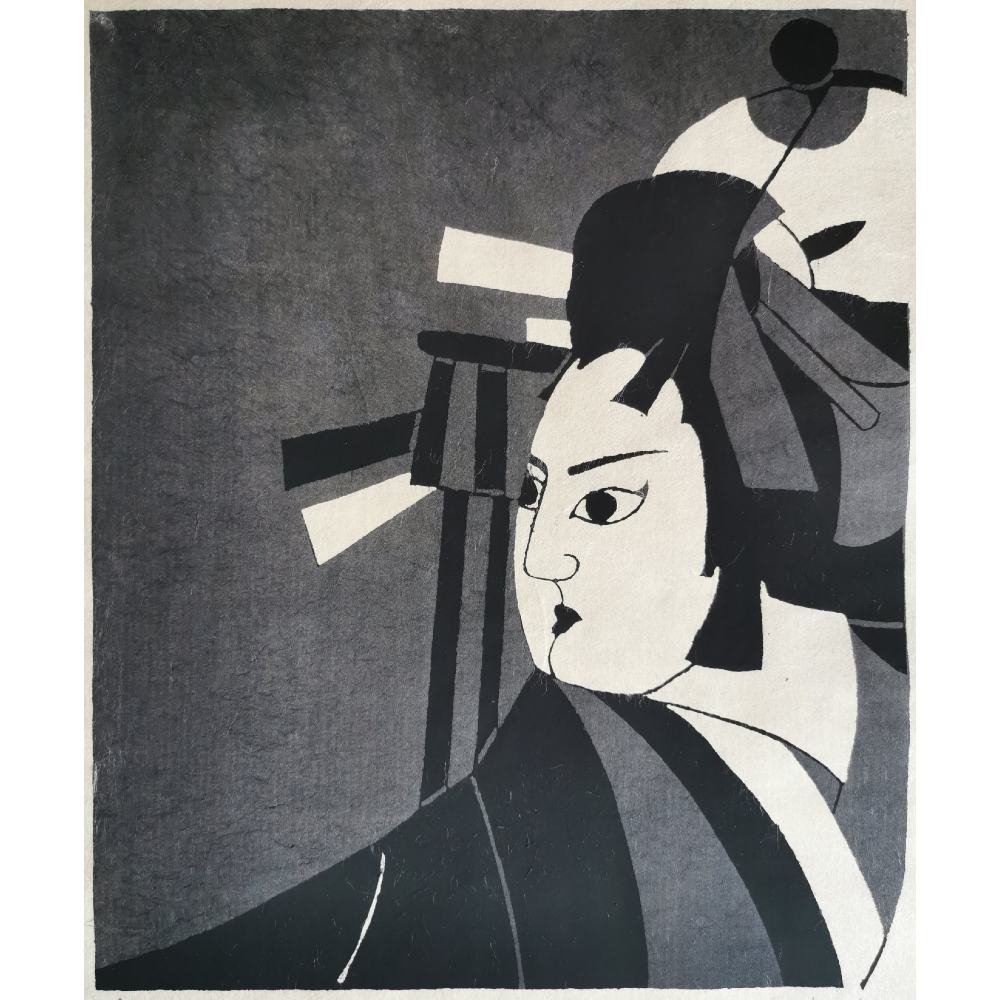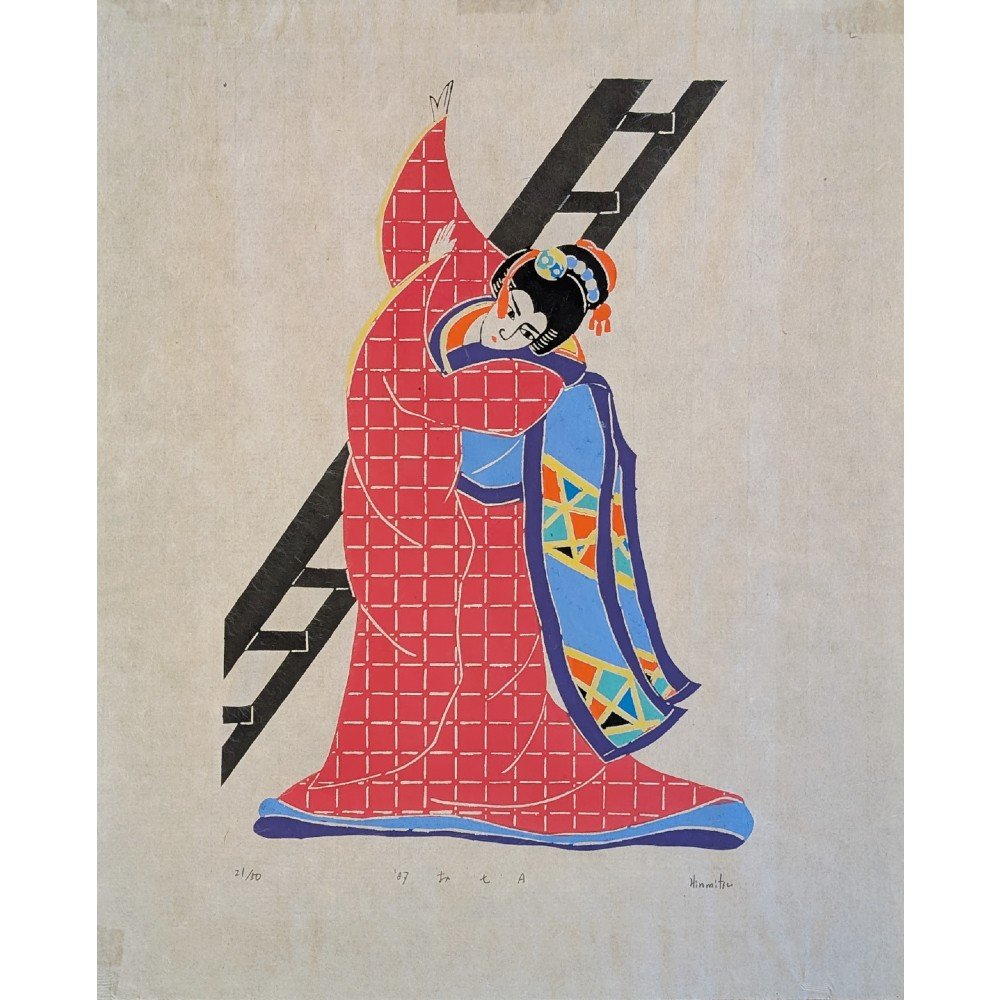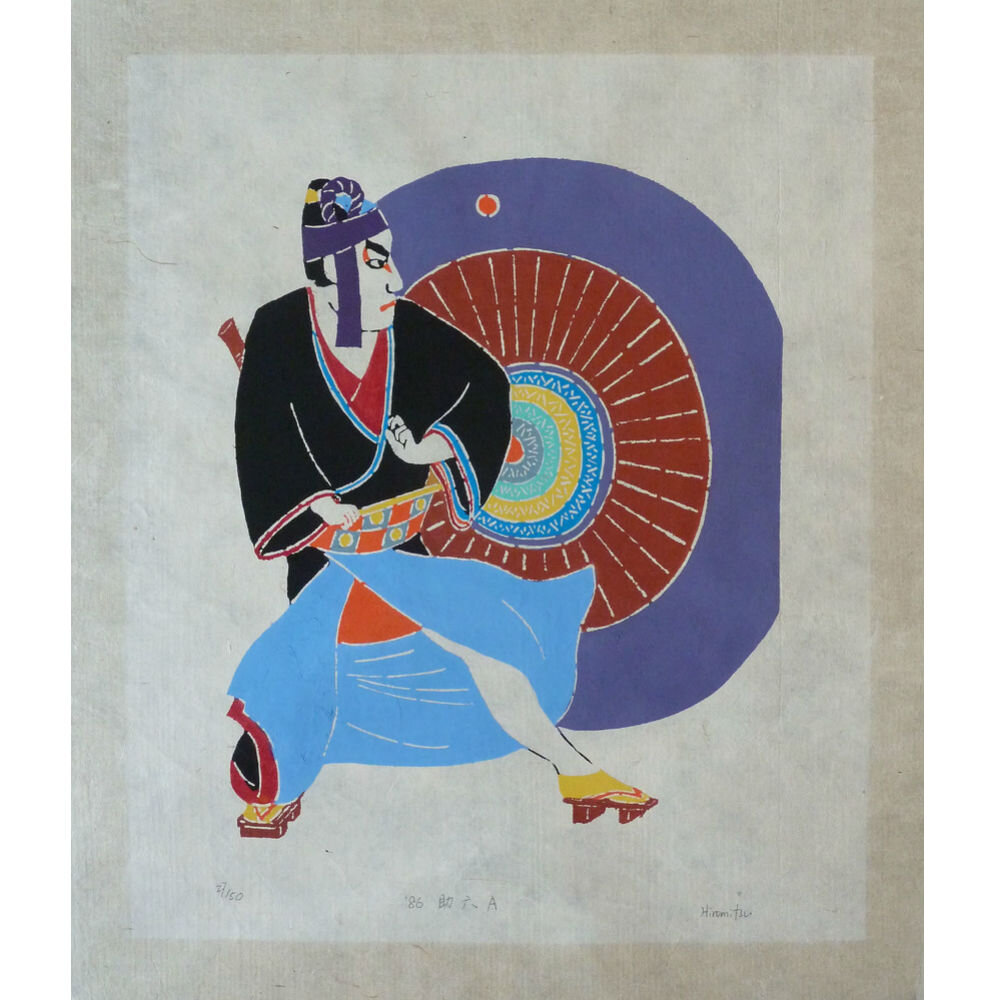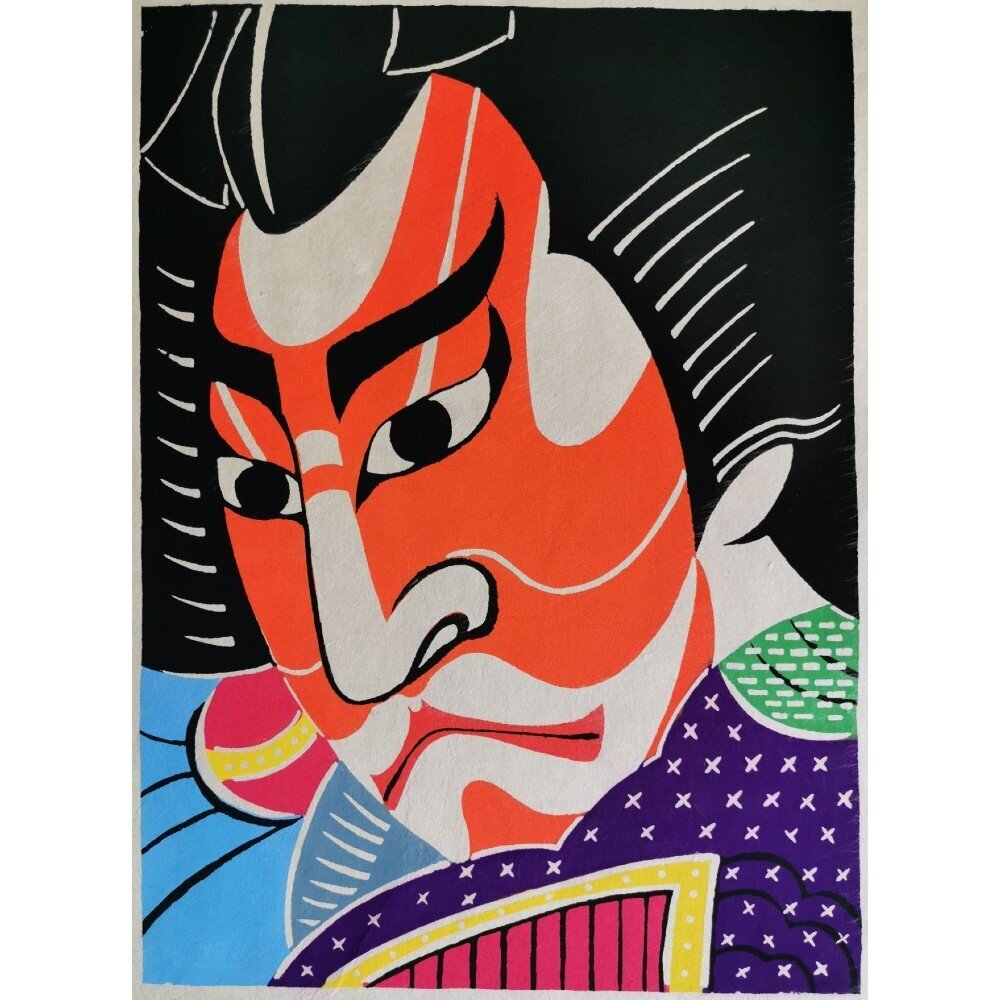高橋宏光 HIROMITSU TAKAHASHI (1959-PRESENT)
Hiromitsu Takahashi was born in Kanagawa prefecture in 1959. Brought up in a very creative family, his exposure to the arts was particularly strong and his works undoubtedly display the creative influences of his parents and their association to legendary Japanese artists Yoshitoshi Mori and Keisuke Serizawa.
Hiromitsu’s limited edition prints tend to be published in small numbers, with his greatest works printed in volumes of often no more than twenty pieces. Developing a highly distinctive style which draws theme from Kabuki theatre and Japanese tradition; Hiromitsu Takahashi’s prints express sweeping, free-flowing design through areas of flat vibrant colour, and contrast a degree of tactility toward his use of handmade washi papers. One of the last true remaining kappa-zuri stencil descendants of the 20th Century.
Latest News: (New: Book): Hiromitsu Takahashi "The DyEing Art of Kappazuri" by Lucas Martineau (2020). Available @ The Tolman Collection (Tokyo) - The authoritative & exclusive source of Hiromitsu Takahashi’s works.
Artist Biography:
FAMILY, YOSHITOSHI MORI: KAPPA-ZURI.
Hiromitsu Takahashi’s path to artistic triumph was not necessarily a straight one. Son to Takahashi Isao & Toshiko Soeda - both established artists in their own right, Takahashi did not initially fall spell to the artistic influence of his parents and pursue an artistic career.
Graduating from Nihon University in 1981, Hiromitsu Takahashi spent over eighteen months working as a salesman before deciding to pursue a career in the arts. Drawing inspiration from renowned legendary kappa-zuri artist Yoshitoshi Mori (1898-1992) and katazome designer Keisuke Serizawa (1895–1984) (both of whom Hiromitsu’s parents served as printers for), he soon embraced an extremely intricate and dying craft of printmaking - kappa-zuri (stencil style). Exposed to his mother’s eye for botanical, colourful, and patterned textile design, and the typical free flow, expressionistic, and earthen colour palette of Mori’s stencil pieces, Hiromitsu’s style has developed to convey sweeping melodramatic scenes from Kabuki theatre with areas of flat vibrant colour.
THE LAST TRUE KAPPA-ZURI ARTIST?
After having assisted his mother for a number of years, Hiromitsu later married and became a father. Questioning the financial viability of raising a family as an artist, Hiromitsu did spend some time searching for alternative work. However, after a mere few weeks, Hiromitsu could not resist the lure of the arts. Evermore determined, and with further support from those such as the Tolman Collection, Tokyo, Hiromitsu’s prints have gone on to display at various exhibitions worldwide and have been in the hands of world leaders (Ambassadors from Japan gifting Hiromitsu’s work to Egyptian Prime Minister Atef Sedki in a visit to Cairo in 1994).
Considered as the successor to celebrated kappa-zuri artist Yoshitoshi Mori, Takahashi’s work is on a parallel with Japan’s greatest stencil artists. Perhaps the last true modern kappa-zuri artist, Hiromitsu Takahashi’s works are quickly gaining exposure & recognition from the West - however not quite yet to the extent many of his contemporaries have achieved.
Written by: Jack Payne | © Lambsquay Gallery
BIBLIOGRAPHY/ARTICLES:
Tolman, M.S. & Tolman, N.H. (1994) Collecting modern Japanese prints: then & now. Rutland, VT, Charles E. Tuttle Co.

